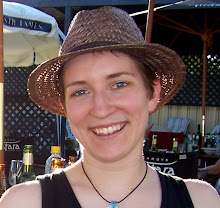I am one of the few lucky people who really enjoys their job. Not many of my fellow AYADs would believe this, since all I seem to do here is whinge about my work. The jobs I've had in Australia, while I've had bad days and even bad weeks, have always given me great satisfaction. The work I'm doing here is exponentially more challenging in every way - language barrier, attitudes to health and disability, lack of resources, cultural differences, inability to plan patient workload, lack of professional support, frustration at the number of disabilities that could be prevented if there was free and competent medical care available... I could continue but I think the point has been made. There are, however, some absolutely awesome things about working here.

This morning I went on a field visit with Sheuly, one of my favourite colleagues. We caught a CNG to a village about 3km from Sitakunda, where she had a "people's organisation" meeting. Following this, we walked through a light drizzle of rain past lush green fields (trying to avoid slipping in the mud!) until we got to the railway line that connects Chittagong and Dhaka. We made detours on either side of the railway line to visit clients for therapy, one of whom bit my finger (the little shit). This required a stop at a small cha (tea) stall afterwards for some sugar-fuelled recovery. Bangladeshis make their cha with sweetened condensed milk, and often add sugar as well. (One day when I made herbal tea for my colleagues, most of them spat it out before declaring that they prefer Bangladeshi tea with milk and sugar.) The shelves on the wall were depressingly empty, almost as if the elderly man operating the stall was waiting to clear the last of his stock before retiring. Best bit? 2 cups of tea cost 6 taka, or 10 cents!

I love being able to visit "real" Bangladeshis in the course of my work. Unlike in Australia, where the vast majority of the population lives in the major cities, most Bangladeshis live in rural areas. Around Sitakunda, most of the village houses have walls made of either mud or woven grasses; sometimes they are corrugated iron. The roofs are either thatch or corrugated iron. Some houses have windows, but many don't. The walls are covered in caldendars from the last 10 years, and the houses whose occupants are Hindu have pictures of various gods. (I'm getting better at identifying them and can reliably name Krishna, Radha and Ganesh, who are the most common ones to see.)

Invariably, we'll come inside and my colleague will ask, "Current nei?", meaning "No electricity?" This means no ceiling fan and no light, other than the natural light coming in the door. Which would be no problem, except that my presence usually attracts a crowd of onlookers (nobody here - including the patients themselves - seems concerned by the lack of privacy and confidentiality) who fill the room and doorway, blocking both the light and any breeze. So I perform a hot and semi-blinded assessment, as much as possible since the kids are generally petrified of the white-skinned stranger poking and prodding them. Very different to any home visit I've done in Australia!

Totally unrelated but so exciting I wanted to include it - I ate jackfruit for the first time today! I'd been thinking it was the same as durian, which I've tried and found revolting. All this time I'd been bagging the Bangladeshis for having a dud of a national fruit (they have a "national" everything here - sport, fish, fruit, tree, bird etc etc). But jackfruit was actually quite nice. I would definitely eat it again if offered.

No comments:
Post a Comment